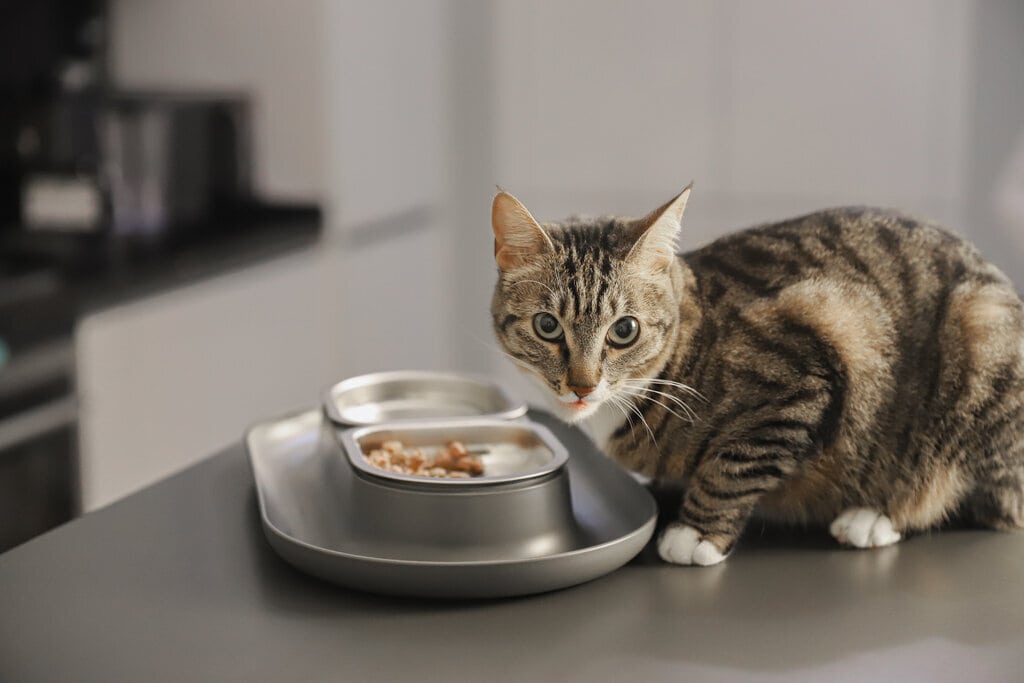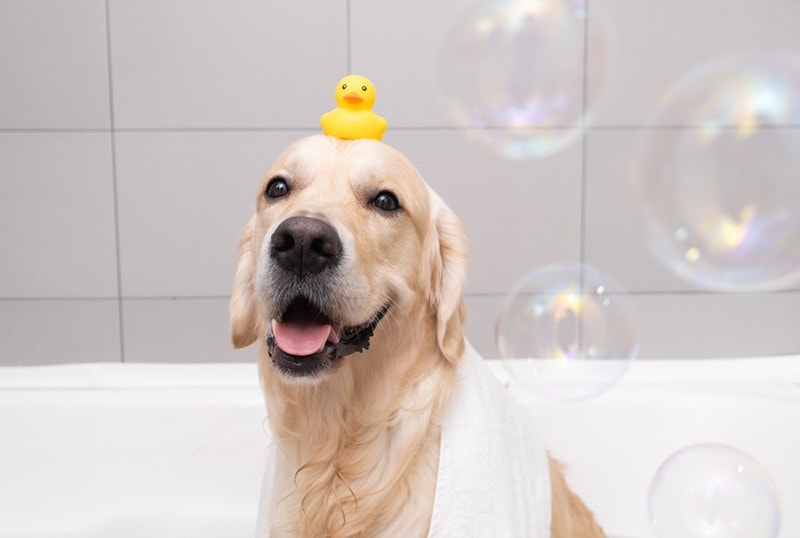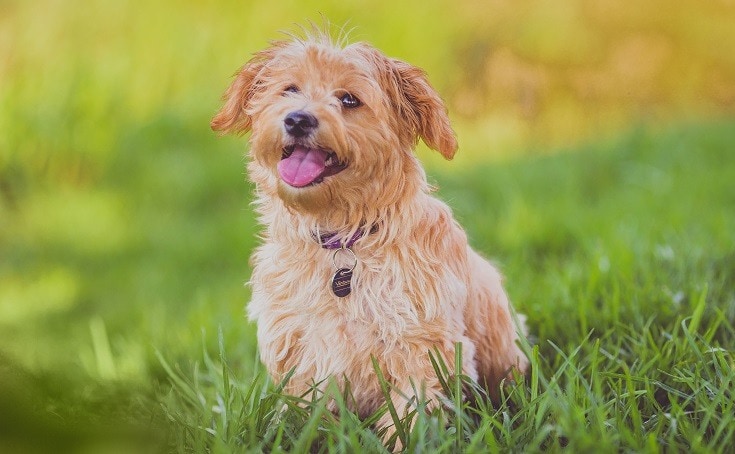Dalmador (Labrador & Dalmatian Mix): Info, Pictures, Facts

Updated on
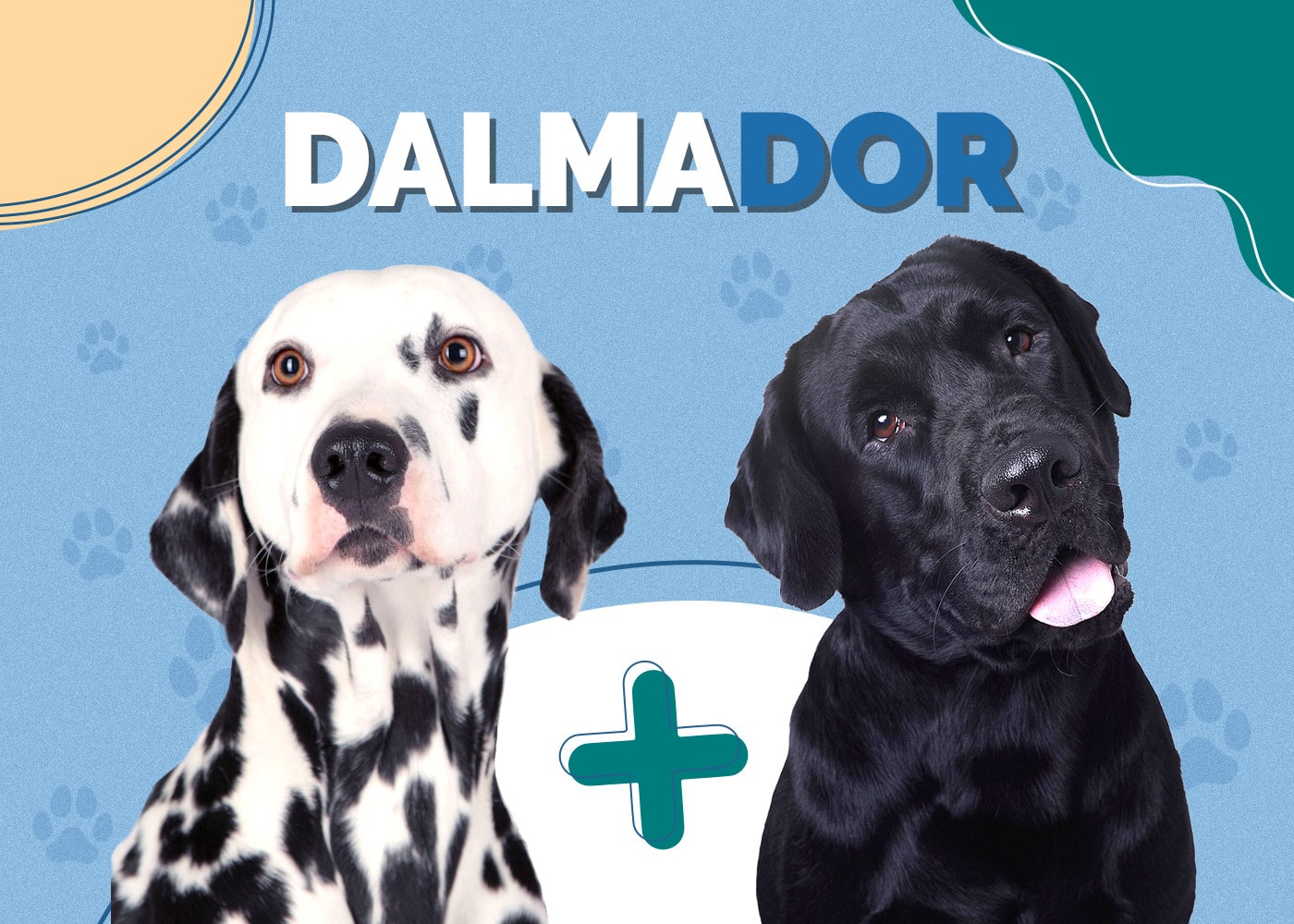
| Height: | 20–24 inches |
| Weight: | 50–80 pounds |
| Lifespan: | 10–14 years |
| Colors: | Solid black, yellow, chocolate, or white sometimes with spots in black or liver |
| Suitable for: | Active individuals or families, a rural or suburban environment, those with a fenced-in yard, those seeking a trainable and energetic dog |
| Temperament: | Lively, social, active, even-tempered, obedient, enthusiastic, affectionate |
Sociable, loyal, and even-tempered, the Dalmador is a true dog’s dog. They have some of the best and most emblematic of canine traits. Dalmadors are hardworking and eager to learn. They love exercising and playing games. And their easygoing natures make them excellent companions and family dogs. The history of the Dalmador is still in the early years, but let’s look at the parent breeds for a bit more information: the Labrador Retriever and Dalmatian.
The Dalmatian was first recorded in the Eastern European coastal area of Dalmatia, near the Adriatic Sea. They were most likely brought to England in the 18th century where they were developed as coach dogs. Their job was to guard property and passengers. Later, their affinity for horses made them well-suited to following horse-drawn fire engines. Dalmatians are still sometimes used as mascots at firehouses, as well as fire-awareness education. This breed has been in America since colonial times.
The Labrador Retriever was bred as a hunter and water retriever. They were developed from mixes of different gun dogs and the Saint John’s Newfoundland in the early 19th century. Labrador Retrievers are one of the most popular breeds in the United States and are still used for hunting and several other jobs, including service work, detection, and search and rescue.
Dalmador Puppies
It’s easy to see why the Dalmador is such a popular new hybrid. Sensitive, sweet, and enthusiastic, they make perfect friends for adventuring and lounging alike. If you take care of this dog, you’ll have more than just a pet—you’ll have an active and joyful life companion!
And they are especially beautiful dogs, too. Dalmador puppies are likely to have the famous Dalmatian spots, whether in stark contrast to their base color or just charmingly freckled. The color variations from the Labrador Retriever mixed with those eye-catching spots make for unique and striking coats. A moderately long-lived canine, chances are you will be welcoming a new Dalmador into your life for well over a decade. No one can predict the ups and downs of life, so you should be prepared to care for your dog in times of both health and hardship.
While Dalmatians are rather famous in pop culture for inbreeding, many breeders are very careful with their canine lineages. If approaching a breeder for a Dalmador puppy, don’t be ashamed to ask tons of questions!
Ask about how the breeder raises their pups, the health of the parents, socialization techniques, favorite toys and games, what recommendations for food and training materials they may have. The more you know, the better off the start to you and your Dalmador’s life together will be!
3 Little-Known Facts About the Dalmador
1. Dalmatians Are a Jack-of-All-Trades Dog
The Dalmatian breed has had a vast variety of jobs: sporting dog, trail hound, bird dog, retriever, boar hunter, coach dog, firehouse mascot, guard dog, and even stage performer and circus star!
Their intelligence, affinity for working with horses and other animals, and their striking spots make for a versatile and eager dog.
2. One Labrador Retriever Went to Prison
Pep the black Labrador Retriever was sentenced to life without parole at Eastern State Penitentiary, in Pennsylvania in 1924. He killed the cat of Governor Gifford Pinchot and spent the rest of his 10 years of life behind bars.
It’s not all bad though. During his time there, Pep became good friends with the warden and was an unofficial prison mascot of sorts.
3. Dalmadors Are Incredibly Athletic
Seeing as both the parent breeds are vigorous and hard-working canines, it’s no surprise that the Dalmador is also a seriously athletic pooch. For example, they have been clocked at reaching speeds of 12 mph in about 3 seconds!
These dogs love walks, runs, hikes, swims, fetch, and just about any exercise imaginable—as long as they have a friend to share it with.
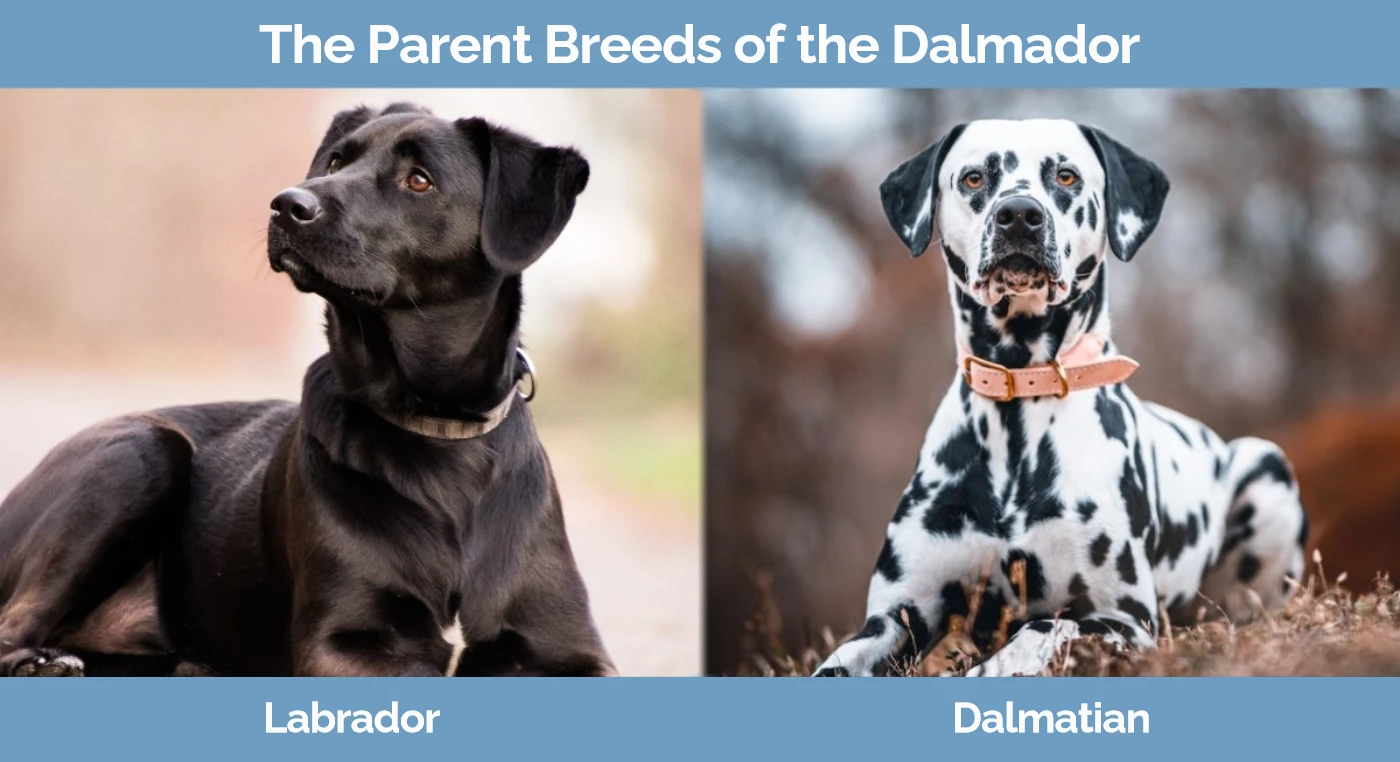
Temperament & Intelligence of the Dalmador 🧠
The mixing of the Labrador Retriever and Dalmatian can produce a variety of character traits, but the resulting Dalmador often has the best of both. Dalmadors are sensitive and protective but balanced out by an easygoing and exuberantly friendly nature. Highly energetic, they relish the opportunity to participate in outdoor activities with their family. Whether swimming, running, biking, or hiking, these dogs will want to be included.
And that’s not to say these pups don’t also enjoy relaxing—they’ll also be crawling into your lap to lounge with you long after they’re too big to fit. They love children and can make a great playmate for older kids. This dog’s size and energy may knock small kids around, so supervision of young children and a Dalmador is advisable.
Dalmadors are bright as well, which means they can and will get bored if left alone or cooped up for long periods of time. Giving your dog multiple opportunities throughout the day to exercise and play outside is highly recommended. And, if you must leave your dog alone, give them plenty of toys to occupy their teeth. Many Dalmadors enjoy chewing and providing sturdy chew toys will keep you from having to replace your furniture and shoes regularly!
Are These Dogs Good for Families? 🏡
Between the slightly protective nature of the Dalmatian and the famed sensitivity of the Labrador Retriever, the Dalmador breed is exceptionally well suited to families and children. Dalmadors have an easygoing friendliness to them and are known for their gentleness with children of all ages. If you socialize your dogs and kids with each other early, they can easily become best friends.
Active children will especially get along with these eager and athletic dogs. Biking, running, exploring—let both child and dog channel their endless energy into outdoor activities and it will be a race to see who can tire the other out first!
Does This Breed Get Along with Other Pets? 🐶 😽
Dalmadors are known to be patient and companionable with other animals, especially dogs and horses. They are friendly, mellow, and tolerant when dealing with almost everyone and make very little distinction between species.
The most you are likely to need to correct is if your Dalmador’s playful energy becomes a source of friction with your cat, or older pets. But if you socialize them early and give your dog plenty of exercise and playtime, they should all get along swell!
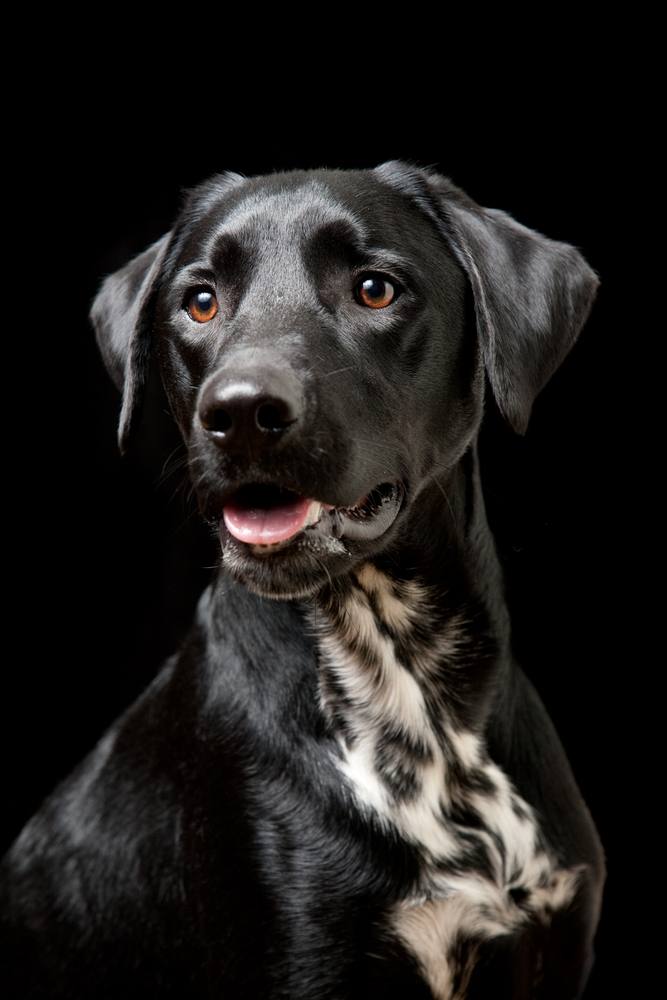
Things to Know When Owning a Dalmador
Are you already utterly charmed by the big, sensitive eyes of the Dalmador? We know how hard they are to resist, but don’t let that sweet face stop you from fully considering the commitment involved in adding a canine to your family.
Here you’ll find more information on the care and keeping of a Dalmador so that you can get a better idea of what life with this dynamic and loving dog may be like!
Food & Diet Requirements 🦴
Well-balanced nutrition is an important building block of health, so we recommend giving your Dalmador a high-quality kibble to satisfy their dietary needs. If you get your vet’s approval you can also give them some veggies, fruits, and lean proteins sometimes to liven up mealtime.
Both the Dalmador’s parent breeds are predisposed to obesity, which quickly leads to joint problems for these athletic, medium to large dogs. Be sure to check in with your vet about appropriate portion sizes and weight gain so that your Dalmador will not have to lug around any unnecessary pounds.
Exercise 🐕
Being an active, medium to large-sized dog, the Dalmador requires multiple opportunities to exercise every day. And as a juvenile dog, they may need even more! A Dalmador is best kept in a home with a fenced-in yard or larger surrounding property.
Though you probably won’t need to encourage your Dalmador to exercise, remember that what they really love is getting active with you and their family. They need an owner who can keep up with their energy needs or, as a breed that is somewhat prone to obesity, their health may suffer.
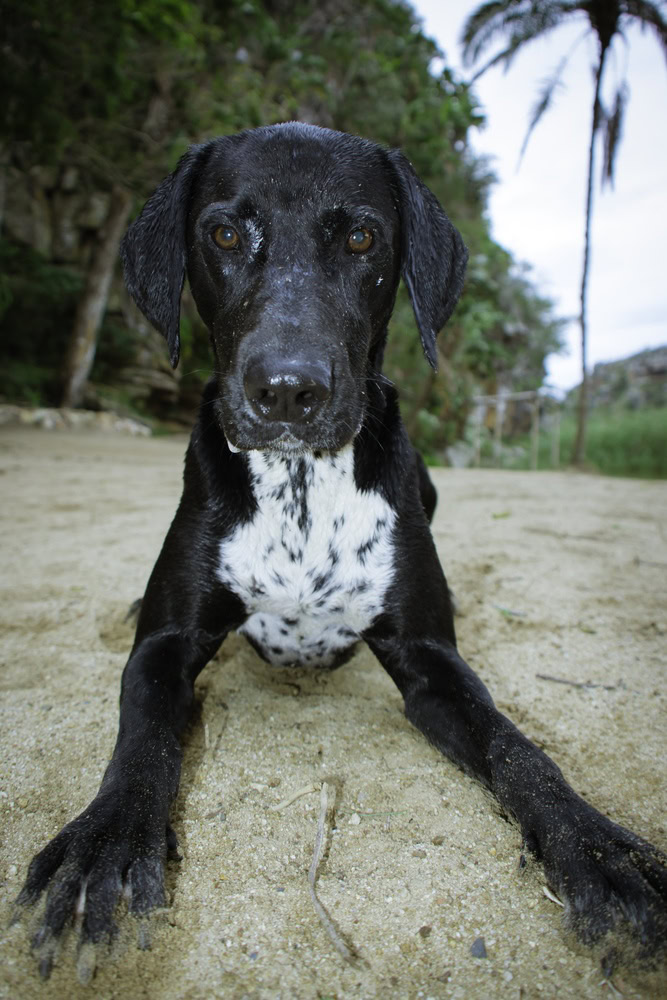
Training 🦮
The Dalmador responds well to training and is intelligent and eager to please. They are high energy and may be distractible at times, especially in their youth. Though very quick to learn, they will need firm, positive training, and plenty of patience.
As with any dog, ingraining a strong, reliable recall and a few basic obedience commands is highly encouraged. Obedience training is essential for Dalmador puppies as their exaggerated friendliness may not always be well-received—especially once they reach full size!
Grooming ✂️
The Dalmador has a short, but dense coat. You probably won’t need to brush your dog more than once or twice a week as the Dalmador is mainly a seasonal shedder.
Just like with any pup, you will want to check your Dalmador’s ears, nails, and teeth regularly. Ears need to be cleaned of any built-up wax and dirt to avoid infections. Though the nails may be worn down naturally, some still need the occasional trim to prevent cracking. And a regular teeth cleaning will provide your dog with fresher breath, and a lower chance of gum disease.
Health and Conditions ❤️
The Dalamdor is a robust and energetic breed. And, like all hybrid dog breeds, the Dalmador is generally healthier and less likely to inherit genetic disorders than either of its parent breeds.
Dalmatians are often cited during discussions of poor health from inbreeding. But in the last 30 years, many breeders have taken steps to ensure the health of new generations. Finding a healthy Dalmador should not pose a problem.
All that being said, there are a few health conditions to be aware of for this breed.
- Deafness
- Kidney and bladder stones
- Skin allergies
- Progressive retinal atrophy (PRA)
- Arthritis
- Epilepsy
- Hip dysplasia
Male vs Female
Though personalities vary by dog, you can usually count on a couple of differences between the sexes. Male Dalmador dogs are bigger, and often more liable to hump or mark territory with urine. The female Dalmador is a little smaller and more reserved.
Final Thoughts
So, is the Dalmador the right dog for you?
If you live in an apartment or have a sedentary lifestyle, perhaps not. However, if you are looking for an energetic, affectionate, and highly trainable canine addition to your family then the Dalamdor may be just right!
Featured Image Credit: 1stGallery, Shutterstock




